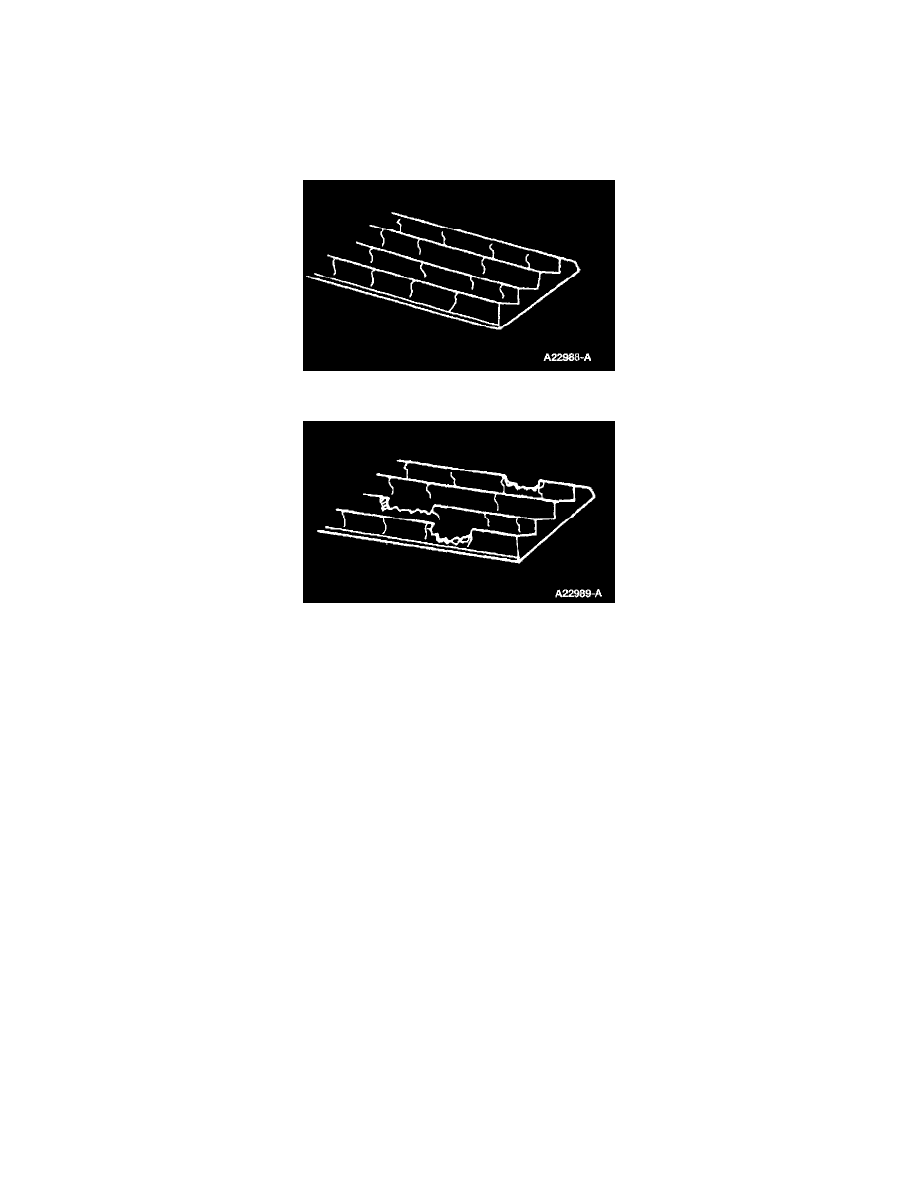Explorer 2WD V6-245 4.0L SOHC VIN E EFI (1997)

Drive Belt: Component Tests and General Diagnostics
Belt Tension
NOTE: Drive belt tension is not adjustable. The drive belt tensioner automatically adjusts drive belt tension.
Cracking/Chunking/Wear
V-Ribbed Belt With Cracks (Acceptable)
V-Ribbed Belt With Chunks Of Rib Missing (Not Acceptable)
Under severe operating conditions (high temperatures, low humidity), drive belt rib cracking can occur at less than 48,000 km (30,000 ml). Drive belt rib
cracking has no effect on belt performance. Drive belt "chunking" describes a condition when the rubber material actually chunks out between the rib
cracks. The drive belt must be replaced if chunking occurs.
Drive Belt Misalignment
CAUTION: Incorrect drive belt installation will cause excessive drive belt wear and may cause the drive belt to come off the drive pulleys.
Non-standard replacement drive belts may track differently or improperly. If a replacement drive belt tracks improperly, replace it with an original
equipment drive belt to avoid performance failure or loss of belt during cold operation.
With the engine running, check drive belt tracking (the position of the drive belt on the drive belt tensioner pulley). If the edge of the drive belt rides
beyond the edge of the drive belt tensioner pulley, noise and premature wear may occur. If a drive belt tracking condition exists, proceed with the
following:
-
Visually check the drive belt tensioner for damage, especially the mounting pad surface. If the drive belt tensioner is not installed correctly with
the dowels in the mounting bracket holes, the mounting surface pad will be out of position. This will result in chirp and squeal noises.
-
With the engine running, visually observe the grooves in the pulleys (not the pulley flanges) for excessive wobble. Replace components as
required.
-
Check all accessories, mounting brackets and the drive belt tensioner for any interference that would prevent the component from mounting
properly. Correct any interference condition and recheck belt tracking.
-
Tighten all accessories, mounting brackets, and drive belt tensioner retaining hardware to specification. Check the drive belt tracking.
Drive Belt Noise/Flutter
Drive belt chirp Occurs due to pulley misalignment or excessive pulley runout. It can be the result of a damaged pulley or an improperly aligned pulley.
